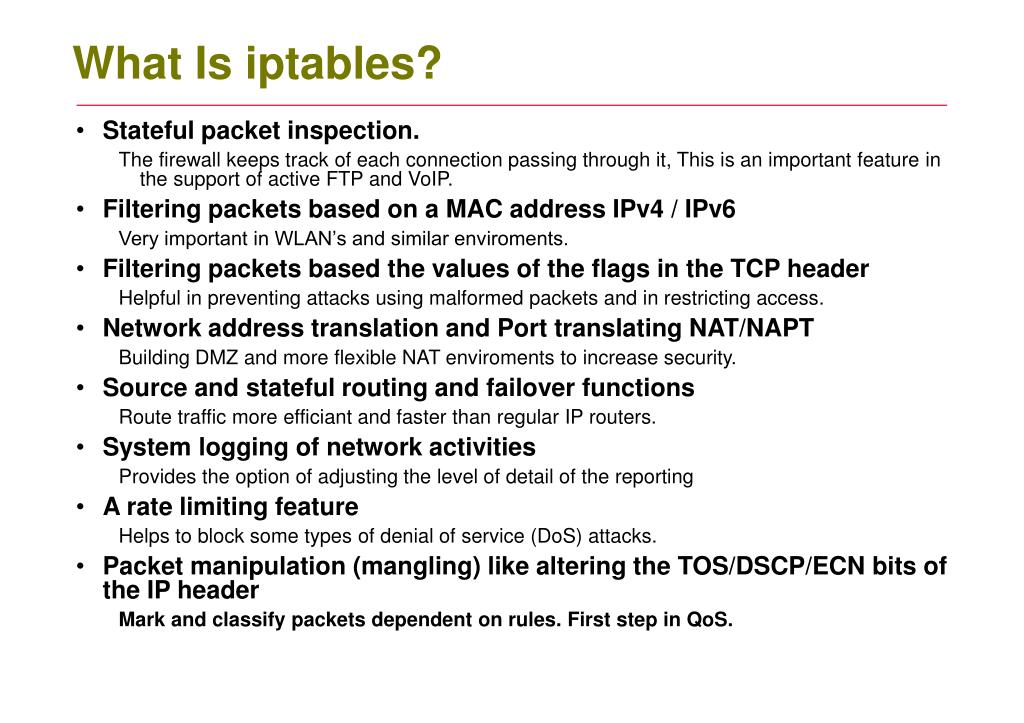


To view these logs, you need to configure syslog to read the message buffer and write the logs to a file. sudo iptables -A INPUT -s 192.168.10.0/24 -j LOG -log-prefix '** SUSPECT **' Step 3: Configure Syslogīy default, iptables logs are sent to the kernel’s message buffer. We can also add some prefixes in generated Logs, So it will be easy to search for logs in a huge file. To define the level of LOG generated by iptables use -log-level followed by the level number. If you want to log only specific types of traffic, you can use the -p option to specify the protocol, such as TCP or UDP, and the -s option to specify the source IP address. This command adds a new rule that logs all incoming traffic. This can be done using the following command: sudo iptables -A INPUT -j LOG To enable logging into iptables, we need to add a new rule to the iptables configuration. This command will show you the current iptables rules, including any rules for logging. To do this, enter the following command in the terminal: sudo iptables -L Step 1: Check the Current Iptables Rulesīefore we begin, it is important to know the current iptables rules that are in place on your system. This guide aims to provide a clear and easy-to-follow introduction to iptables logging for beginners. Also, you need to have root access to your Linux system to perform the steps outlined in this guide. Before we begin, it is important to note that iptables logging is only available in kernel 2.4.x and later versions.


 0 kommentar(er)
0 kommentar(er)
